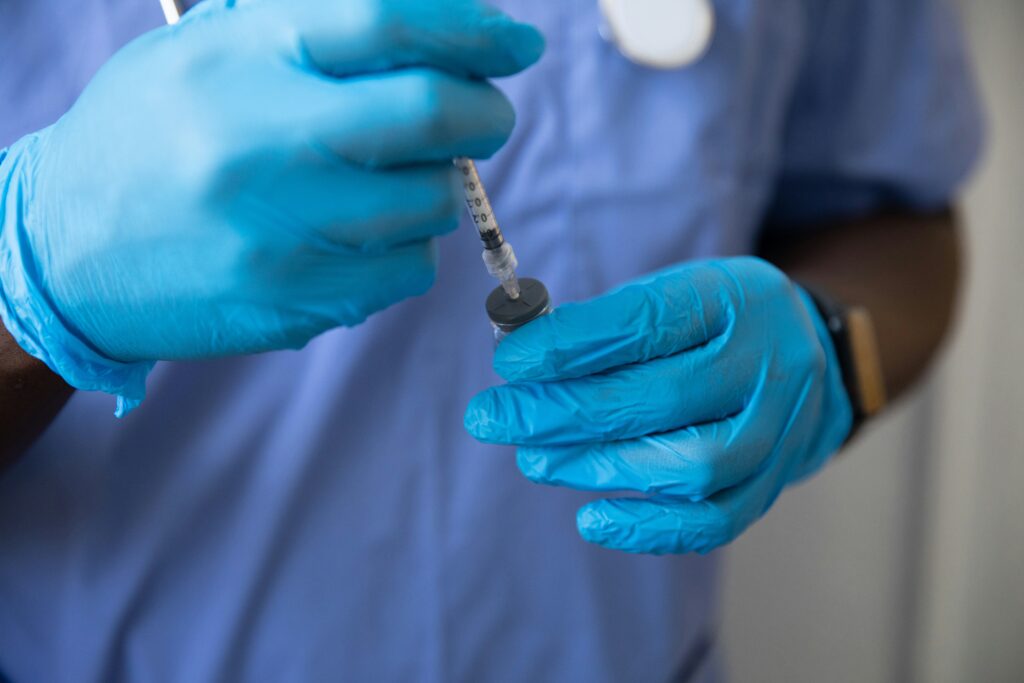ICSI Intracytoplasmic Sperm Injection is a procedure where a spermatozoon is injected directly into an egg. It bypasses the process that spermatozoon needs to penetrate through cumulus granulosa cells layers and zona pellucida to directly enter ooplasm.
ICSI Intracytoplasmic Sperm Injection is a procedure where a spermatozoon is injected directly into an egg.
It bypasses the process that spermatozoon needs to penetrate through cumulus granulosa cells layers and zona pellucida to directly enter ooplasm.
In the US, more than 70% of insemination cases are performed by ICSI.
Initially ICSI was developed for male factor IVF cases (oligozoospermia).
In order to prevent unexpected no fertilization by conventional insemination, ICSI becomes the main insemination procedure worldwide despite reported concerns. In the pre-implantation genetic testing era, ICSI also is the prefer insemination procedure to prevent contamination of genetic testing.

In the US, more than 70% of insemination cases are performed by ICSI.
Initially ICSI was developed for male factor IVF cases (oligozoospermia).
In order to prevent unexpected no fertilization by conventional insemination, ICSI becomes the main insemination procedure worldwide despite reported concerns.
In the pre-implantation genetic testing era, ICSI also is the prefer insemination procedure to prevent contamination of genetic testing.

For non-male factor ICSI cases, there are reports showing decreasing implantation rate, live birth rate, and increasing spontaneous abortion rate. Since ICSI is the main insemination procedure, we have searched how to prevent the negative impact by ICSI.
For non-male factor ICSI cases, there are reports showing decreasing implantation rate, live birth rate, and increasing spontaneous abortion rate. Since ICSI is the main insemination procedure, we have searched how to prevent the negative impact by ICSI.
The key consideration is ICSI introduce un-needed enzymes into ooplasm. The un-needed enzymes may create non-specific interference of embryo development. The non-specific developmental interference results with the negative impacts. The un-needed enzymes are hyaluronidase and acrosin.


In natural way, capacitated spermatozoon needs hyaluronidase to dissociate the cumulus granulosa layers to create a tunnel to reach egg. After penetrating through the cumulus layer, it encounters zona pellucida (imagine as protein shell of egg). The zona pellucida is a protein boundary. Sperm needs acrosin (a trypsin like enzyme) to drill a hole through zona pellucida. Then the whole spermatozoon (with tail) will meet oolemma then fusion with ooplasm. During the process, it uses up the hyaluronidase and acrosin.
By ICSI procedure, spermatozoon selected for ICSI may not capacitate yet. Spermatozoon hyaluronidase and acrosin enzymes are introduced into the ooplasm by mechanical ICSI procedure.

By ICSI procedure, spermatozoon selected for ICSI may not capacitate yet. Spermatozoon hyaluronidase and acrosin enzymes are introduced into the ooplasm by mechanical ICSI procedure.

We create a system to take advantage of capacitated sperm gains the capability of chemotactic property. Cumulus mass fragments in a straw can serve as a trap to collect capacitated spermatozoa. The capacitated spermatozoa can go through acrosome reaction and release out un-needed hyaluronidase and acrosin. By using these spermatozoa for ICSI, we have found fertilization rate, day 5 and total blastocyst rates, implantation rate, fetal heartbeat rate are significantly increase (Wun et al, 2019).
We believe the technique can better serve Harvest Fertility patients.
We create a system to take advantage of capacitated sperm gains the capability of chemotactic property. Cumulus mass fragments in a straw can serve as a trap to collect capacitated spermatozoa. The capacitated spermatozoa can go through acrosome reaction and release out un-needed hyaluronidase and acrosin. By using these spermatozoa for ICSI, we have found fertilization rate, day 5 and total blastocyst rates, implantation rate, fetal heartbeat rate are significantly increase (Wun et al, 2019). We believe the technique can better serve Harvest Fertility patients.
Wun, WS, Mangal R, Bukowski E, Vanijgul C, Chauhan R, Wun IC. Negative impact of non-male factor ICSI can be alleviated by capacitated/acrosome reacted spermatozoa. Gynecology & Reproductive Health 2019; 3(5) 1-4
